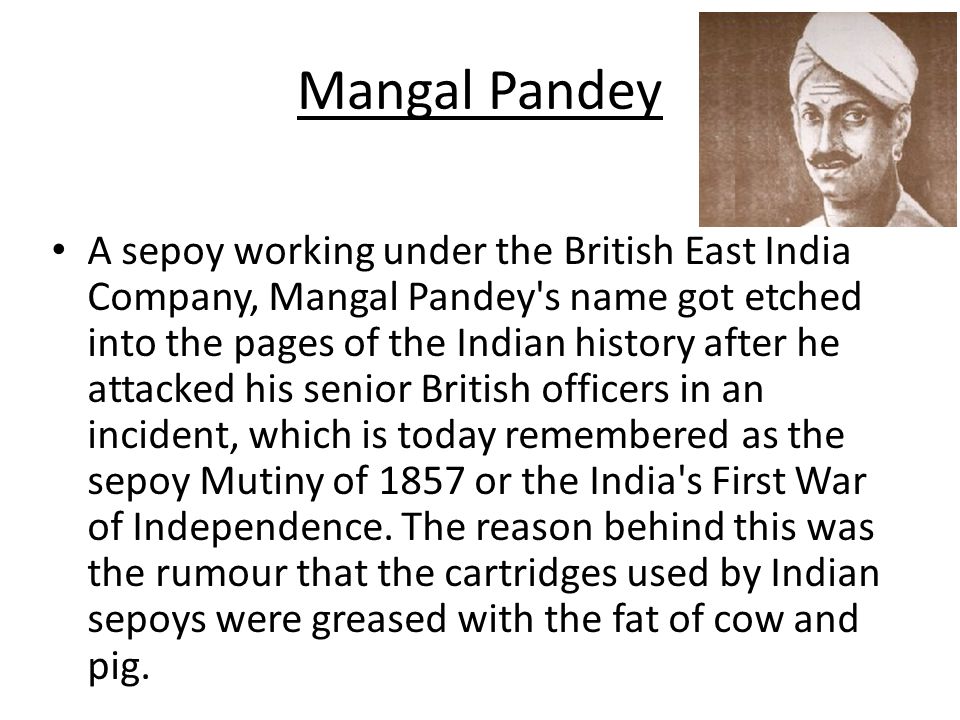The Freedom Struggle – Its various stages and important contributors/contributions – The First War of Indian Independence
Many voices had strengthened and enriched the nationalist movement during the Gandhian phase.
Our national movement was more than a struggle for independence – it was an exercise in building a nation. Voices strengthened and enriched it during 1917-1947 are:
1) The Indian capitalists feared domination and suppression by stronger foreign capital. The Indian capitalists raised the slogan, Indian dominion of Indian markets.
2) Real wages of factory workers progressively went down during the period 1889 to 1929. Since the village workers were living below the margin of subsistence, the unrest developed among them.
3) Middle and lower-middle classes realized that only a country that was developing economically, socially and culturally by itself could provide economic and cultural opportunities to lead a worthwhile and meaningful life.
4) C.R. Das, Motilal Nehru, Jawaharlal Nehru, Lajpat Rai, Vithalbhai, Vallabhabhai Patel and Rajendra Prasad left their practice as lawyers to join the movement. Many prominent Muslim leaders like Maulana Mohammad Ali, MaulanaSaukat Ali, Dr Ansari, Maulana Abul Kalam Azad enriched the movement.
5) With the development of socialist ideas, peasants started insisting on land reforms, the abolition of zamindari system and reduction in the revenue and debt relief.
6) All India Trade Union Congress founded in 1920 worked towards improvement in the workers’ working and living condition.
7) Punjab, Maharashtra, Bengal, Bihar, Uttar Pradesh and Orissa witnessed activities of revolutionaries like Khudiram Bose, Prafulla Chaki, Bhupendra Nath Dutt, V. D. Savarkar, Sardar Ajit Singh, Lala Hardayal and his Gadar Party, Sardar Bhagat Singh, Raj Guru, Sukh Dev, Chandra Shekhar Azad, etc.
The Indian national movement provides one of the few examples of a colonial, exploitative and oppressive political system being efficaciously and peacefully replaced and made a marked change in its form, nature and appearance.
The First War of Indian Independence
The Indian Rebellion of 1857, also known as the First War of Indian Independence started on May 10, 1857 at Meerut. It was the first major and large-scale rebellion against the East India Company rule, although not the first revolt against the Company. Although eventually unsuccessful, it had a profound effect on the Indian people and also changed the nature of British rule over the subcontinent.
Sepoy Mutiny
Causes of Revolt of 1857
- There was brewing discontent over the Company rule in India. About 2/3rd of the country was under the East India Company’s rule and the remaining princely states, although independent in name, had lost their sovereignty to the British in some form or the other.
- Lord Dalhousie’s Doctrine of Lapse ensured that many legitimate heirs of the native states lost their rightful kingdoms to the Company. This instilled in the Indians deep hostility towards the perceived and real injustices of British rule. Also, the colonial rule had disrupted the old feudal system of agriculture and commerce in the country and unsettled many people off their traditional forms of employment.
- The people were also concerned about the pace of westernisation, as evident in the various reforms brought about by the British like the abolition of Sati, etc.
- The igniting factor, however, was the introduction of a new Enfield rifle into the military. The Company relied heavily on its troops for the maintenance of law and order. Most of the military was composed of Indian soldiers or sepoys and British officers. There was also a big discrimination between the English and Indian soldiers in matters of pay and promotions.
- There was a rumour that the new rifles had cartridges that were smeared with the fat of pigs and cows. These had to be bitten off before the rifles could be loaded. This was equally offensive to both Hindu and Muslim soldiers. The British establishment did nothing to quell the rumours.

Immediate Causes of Revolt of 1857
- On March 29th, sepoy Mangal Pandey of the 34th Bengal Native Infantry (BNI) declared rebellion against his commanders and fired the first shot at a British officer.
- He and an accomplice were court-martialed and hanged a few days later. The regiment was disbanded.
- Many of the sepoys felt that the punishment meted out to Pandey was unwarranted, further fuelling them with anger and resentment with the British establishment.
- At Meerut, there was a large cantonment with more than 2000 Indian soldiers. On 24th April, the commanding officer of the 3rd Bengal Light Cavalry ordered his troops to parade and to fire the rifles as part of the drill. All the men, except 5, refused to do so.
- 85 sepoys were court-martialed and sentenced to 10 years’ imprisonment on 9th May. All the accused soldiers were stripped off uniforms and shackled publicly before the whole unit.
- The very next day, the remaining soldiers openly mutinied and set free their 85 comrades from the prisons.
- They also killed several European officers. The revolt spread to the city of Meerut as well.
- The mutinying soldiers reached Delhi, the seat of the Mughal Emperor on 11th May. They captured the city and declared the Mughal Emperor Bahadur Shah Zafar as the Emperor of Hindustan.
- The rebellion spread to many places in Northern India including Kanpur, Lucknow, Jhansi, Gwalior and Bihar. Many Indian princes and rulers joined in the revolt. The most important names are the Rani of Jhansi, Tantya Tope, Nana Saheb, Kunwar Singh, etc.
- The larger princely states of Hyderabad, Travancore, Kashmir, Mysore and the smaller kingdoms of Rajputana also refrained from joining the revolt.
- Ordinary people, peasant, landlords, Hindus of all castes, Muslims, traders, all joined this rebellion.
- The British crushed the revolt ruthlessly, although it took them about 18 months to completely suppress it.
- The revolt saw a lot of unity among the Indians irrespective of their religious and caste affiliations.
Causes of Failure of Revolt of 1857

- The revolt was eventually not successful in ousting the British from the country because of several factors. The sepoys lacked one clear leader; there were several. They also did not have a coherent plan by which the foreigners would be routed. Also, the Indian rulers who aided the revolt did not envision any plan for the country after the British were defeated. It did not involve the whole country either. Only northern India was affected by this revolt. The three presidencies of Bengal, Bombay and Madras remained mostly unaffected. The Sikh soldiers also did not take part in the rebellion.
- After suppressing the rebellion, East India Company rule was ended and the control of the British possessions in the subcontinent went to the British Crown directly through the Government of India Act 1858.
- The government made many changes in the financial, military and administrative policies in India. The British monarch Queen Victoria proclaimed that her ‘Indian subjects’ would receive similar rights to those enjoyed by the British subjects.

